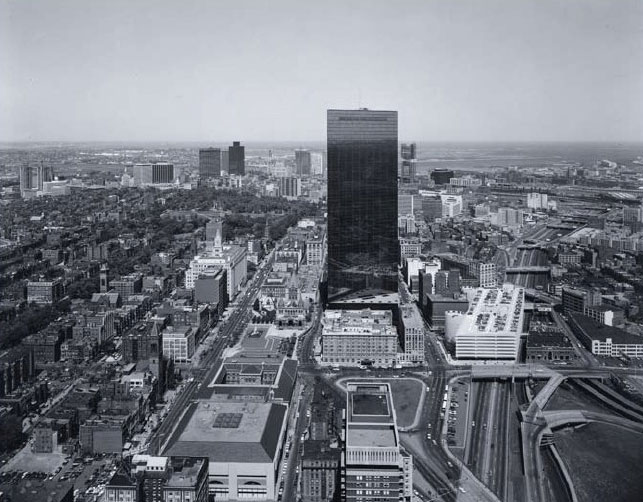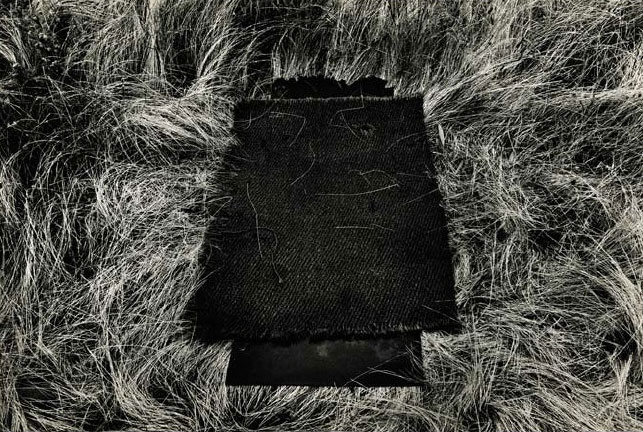- Relief printing
- Intaglio and planographic printing
- Color printing
- Bits and pieces
- Early photography in silver
- Non-silver processes
- Modern photography
- Color notes
- Color photography
- Photography in ink: relief and intaglio printing
- Photography in ink: planographic printing
- Digital processes
- Where do we go from here?
Contact printing

Gelatin silver print. Nicholas Nixon. View of the New John Hancock Building. 1975. 7 5/8 x 9 5/8" (19.4 x 24.4 cm). The Museum of Modern Art, New York. Gift of Richard Benson © Nicholas Nixon. A properly made contact print is virtually as sharp and tonally rich as the negative from which it is derived.
By the 1920s modern photographic papers had evolved into two classes. One group had a low sensitivity to light, and were referred to as “contact” papers. The other group were highly sensitive—some even approaching film in their speed—and were made for use in the enlarger, to make big prints from little negatives. Both of these modern papers were far more sensitive than the older POPs, which had required light of the sun’s intensity for exposure. The first type of these new papers was used by placing negative and paper into a spring-loaded frame, so that the emulsions of each were held closely together. Then an exposure was made with a normal lightbulb from a few feet away.

Gelatin silver print. Josef Koudelka. Wales. 1977. 8 x 11 3/4" (20.3 x 29.9 cm). The Museum of Modern Art, New York. Gift of Richard Benson © Joseph Koudelka.
The second type of paper was exposed in an enlarger, which is really just a camera turned inside out: the small negative is held in a frame and brightly illuminated from behind, and the light passes through it to a lens, which projects the picture onto the paper at a larger scale. I call the enlarger a camera because the subject being photographed is the negative and the print paper takes the role of the film.
Unlike a normal camera, the enlarger contains both light and subject within a light-tight bellows, while the paper recording the image is out in a large dark room. This inversion of light and dark allows the printer to manipulate the light on its way to the paper, altering the overall tonalities by shading with hands or specialized tools. The two classes of paper were based on two different silver salts. The slower paper was usually made with silver chloride, which produced a warm tone. The faster, enlarging papers were usually made with silver bromide, which produced colder colors. Many intermediate papers were produced with mixtures of these salts, and the manufacturers kept the formulas for them secret. By the 1930s a wide variety of papers was available, in many surfaces, speeds, and subtle colors (although all of them were basically neutral). The emulsions of many of these papers contained a great deal of silver. The papers were coated slowly, and had a relatively soft gelatin surface that was delicate but very beautiful; these papers could produce tonally rich prints. As the technology of manufacture advanced over the years, the silver content went down and the coating speeds went up, giving less appealing surfaces. At one point the manufacturers added a top coating to the papers, called a supercoating, made of harder gelatin, which made them easier to handle. As time went by, emulsion design was greatly improved, and even with less silver and harder surfaces, today’s materials are as good as if not better than anything made in the past.

